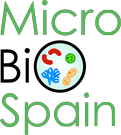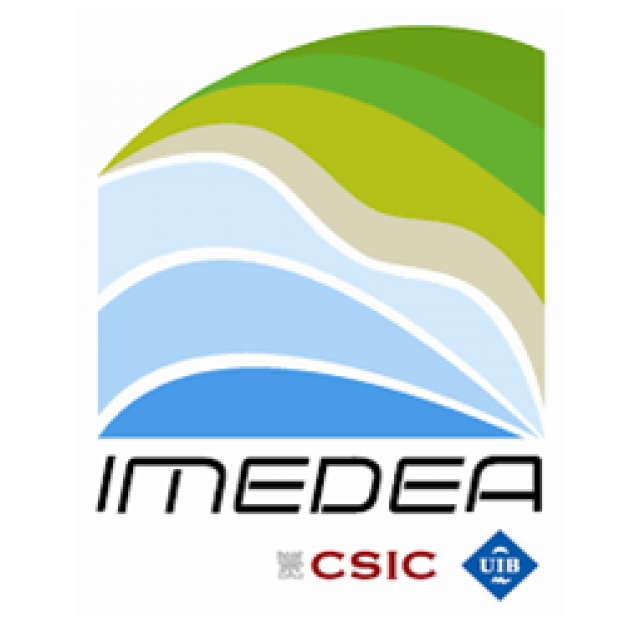- Institution: Mediterranean Institute of Advanced Studies (IMEDEA) – Spanish National Research Council (CSIC) – University of the Balearic Islands (UIB)
- Departament/Service: Marine Microbiology Group
- Location:
C/ Miquel Marquès, 21
07190 Esporles (Mallorca) (Illes Balears)
- Web: http://imedea.uib-csic.es
- Contact:
Mercedes Urdiain – Ramón Rosselló Mora
Phone number: (+34) 971611827
Email: mercedes.urdiain@uib.es – rossello-mora@uib.es
Colection content
Microbial group/s: Archaea and bacteria Total number of strains: 7445 Taxa (number of strains):-Halophilic archaea: Halorubrum Halogeotricum Haloferax Haloarcula Haloplanus Halobacterium Natronomonas Halovivax Haloterrigena Halorientalis Halococcus Etc.-Bacteria: Salinibacter ruber (~1000) Salicola Halovibrio Rhodovibrio Pontibacillus Virgibacillus Salinicoccus Marinococcus Chromohalobacter Nesterenkonia Etc. Isolation source/Origin: Trinitat salt flats (Ebro Delta): -Brines: 257 strains -Sediments: 461 strains Santa Pola salt flats (Alicante): -Brines: 374 strains -Sediments: 280 strains S’Avall salt flats (Mallorca, Balearic Islands): -Brines: 378 strains -Sediments: 353 strains Campos salt flats (Mallorca, Balearic Islands): -Brines: 369 strains -Sediments: 426 strains Ibiza salt flats (Ibiza, Balearic Islands): -Brines: 116 strains -Sediments: 185 strains Formentera salt flats (Formentera, Balearic Islands): -Brines: 183 strains -Sediments: 345 strains Fuerteventura salt flats (Fuerteventura, Canary Islands) -Brines: 195 strains -Sediments: 93 strains Janubio salt flats (Lanzarote, Canary Islands) -Brines: 335 strains -Sediments: 389 strains Lo Valdivia salt flats (Chile): -Brines: 293 strains -Sediments: 439 strains Ojo Seco salt flats, Llullaillaco salt flats, Socompa (Argentin Highlands) -Brines: 419 strains -Sediments: 488 strains Shearwaters (Gran Canaria, Canary Islands) -Spring chicken: 370 strains-Adult: 697 strainsPreservation method: 96-well plates by origin, by means of culture and glycerols in saline medium at -80ºC. The culture media used are based on the Salt Water medium (Rodriguez-Valera et al., 1985) at salt concentrations that vary between 20 and 30%.Information management: The computerization of the cepary was carried out with the program File Maker. Each 96-well plate has associated information on origin, date, culture medium, location and freezing mode.Only the strains with sequenced 16S rRNA gene appear in the database.Characterization level:-Microorganisms grouped based on their protein profile (mostly ribosomal proteins) represented in a dendrogram generated by MALDI TOF.-Sequence of 16S rRNA gene of the strains that characterize each group reaching the identification of genus and species in most cases.
Services
The IMEDEA Marine Microbiology laboratory has used the strains as a base material for the development of numerous studies.
Expertise
Keywords:hypersaline environments, halophilic microorganisms, MALDI-TOF, brines, saline sediments, shearwatersSummary:Description of microbial ecosystems in hypersaline environments:-Use of pioneering techniques for the study of the diversity of cultivable microorganisms by means of MALDI-TOF mass spectrometry and comparative genomic analysis of strains not previously described (e.g. new strains of the genus Salinibacter).-Use of the most modern molecular ecology techniques to carry out an in-depth description of the diversity and dynamics of non-cultivable microbial populations in hypersaline environments through a metagenomic approach and the use of techniques such as pyrosequencing.
Quality Certifications
The collection has not been subjected to a quality system.
Brief historical review
Collection started in 2010. The samples were collected by the personnel of the Marine Microbiology group except those of shearwaters that were sent from a bird recovery center in Gran Canaria. Its isolation and cryopreservation has been carried out in the Marine Microbiology laboratory of IMEDEA in Esporles (Mallorca).

